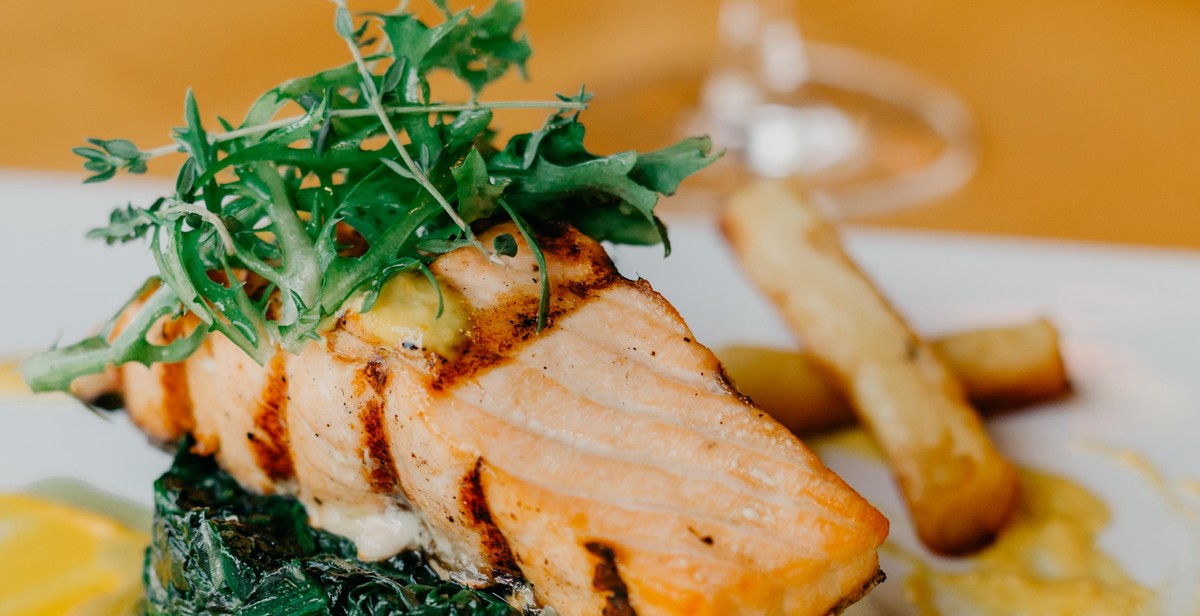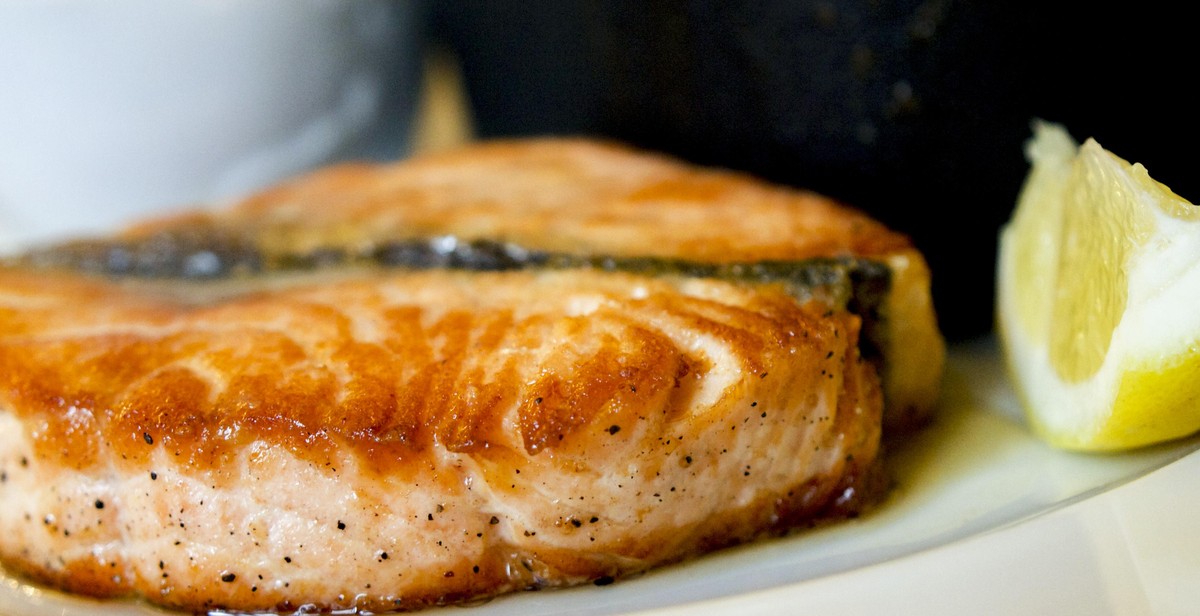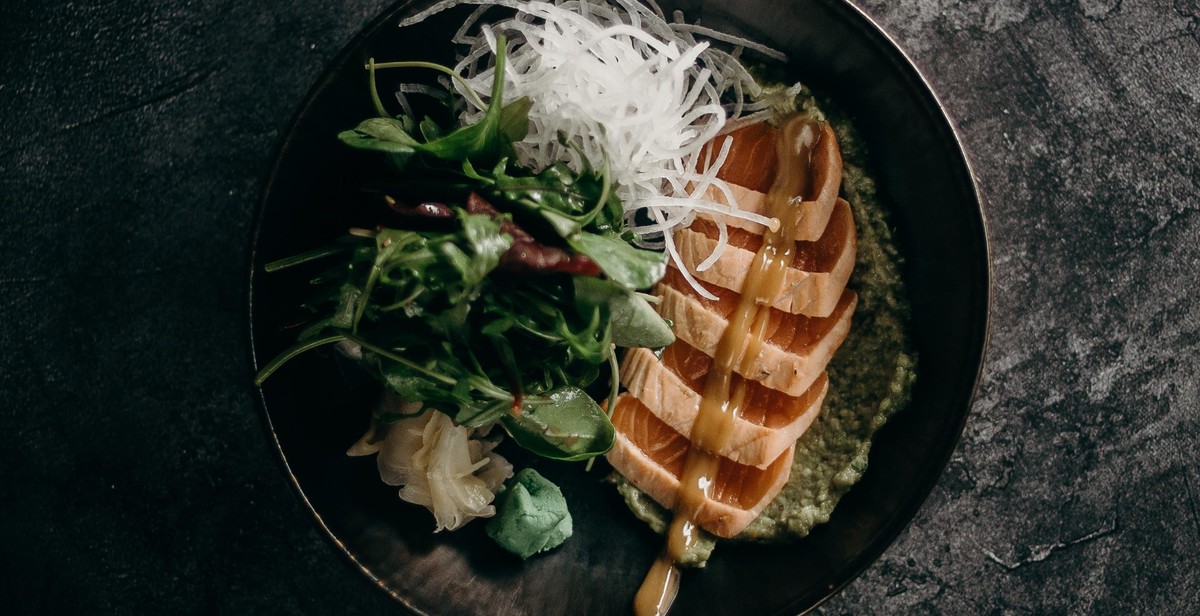How to Grill Salmon Fillets: Healthy and Flavorful Seafood Dish
If you’re looking for a healthy and flavorful seafood dish, look no further than grilled salmon fillets. Salmon is a delicious fish that is rich in omega-3 fatty acids, which are essential for good health. Grilling salmon fillets is a great way to get all the health benefits of this fish while also enjoying its delicious flavor.
Why Grilled Salmon Fillets are a Healthy Seafood Dish
Salmon is a great source of protein, vitamins, and minerals. It is also rich in omega-3 fatty acids, which are essential for good health. Omega-3s have been shown to reduce inflammation, improve brain function, and lower the risk of heart disease. Grilling salmon fillets is a healthy way to prepare this fish because it doesn’t require any added fats or oils, which can add unnecessary calories and fat to the dish.
Why Grilled Salmon Fillets are a Flavorful Seafood Dish
Salmon has a rich, buttery flavor that is complemented by the smoky, charred flavor that comes from grilling. Grilling salmon fillets also creates a crispy exterior while keeping the inside moist and tender. You can enhance the flavor of grilled salmon fillets by adding your favorite seasonings, such as lemon, garlic, or herbs.
Overall, grilled salmon fillets are a healthy and flavorful seafood dish that can be enjoyed all year round. Whether you’re grilling for a family dinner or a summer barbecue, grilled salmon fillets are sure to be a crowd-pleaser.

Choosing the Right Salmon Fillets
When it comes to grilling salmon fillets, choosing the right type of salmon is crucial for both flavor and health benefits. Here are some important factors to consider:
Fresh vs. Frozen Salmon Fillets
While fresh salmon fillets may seem like the best choice, frozen salmon can actually be just as good, if not better. This is because frozen salmon is typically flash-frozen right after it’s caught, which helps to preserve its flavor and nutrients. Fresh salmon, on the other hand, may have been sitting on ice or in a display case for several days, causing it to lose some of its freshness and flavor.
When buying frozen salmon fillets, make sure to choose ones that are vacuum-sealed and free of any freezer burn. Thaw them in the refrigerator overnight before grilling.
Wild vs. Farmed Salmon Fillets
Wild salmon is typically considered to be the healthier and more environmentally-friendly option, as it’s caught in the wild and not raised in a fish farm. Wild salmon is also generally leaner and has a stronger flavor than farmed salmon.
However, farmed salmon can still be a good option if you choose a high-quality brand that follows sustainable and ethical farming practices. Farmed salmon tends to be fattier and milder in flavor than wild salmon, which can make it more appealing to some people.
Skin-on vs. Skinless Salmon Fillets
Whether to choose skin-on or skinless salmon fillets mostly comes down to personal preference. However, there are some important differences to consider:
- Skin-on salmon fillets are generally easier to grill, as the skin helps to hold the fish together and prevent it from sticking to the grill grates.
- Skin-on salmon fillets also tend to have a richer flavor and more tender texture, as the skin locks in moisture and flavor during cooking.
- Skinless salmon fillets are a good option if you prefer a milder flavor or if you plan to use the salmon in a recipe where the skin would be removed anyway.
| Type of Salmon | Pros | Cons |
|---|---|---|
| Wild | Leaner, stronger flavor, healthier, more environmentally-friendly | Can be more expensive, may not be available year-round |
| Farmed | Fattier, milder flavor, more affordable, available year-round | May not be as healthy or environmentally-friendly, quality can vary depending on farming practices |

Preparing the Salmon Fillets
Grilling salmon fillets is a healthy and delicious way to enjoy seafood. However, before you start grilling, there are a few important steps to take to prepare the salmon fillets. Here are the three essential steps to follow:
Thawing Frozen Salmon Fillets
If you are using frozen salmon fillets, it is important to thaw them properly before grilling. The best way to thaw salmon fillets is to place them in the refrigerator overnight. This will prevent the salmon from becoming too dry and will also help to ensure that it cooks evenly on the grill.
If you need to thaw the salmon fillets more quickly, you can place them in a sealed plastic bag and submerge them in cold water. Make sure to change the water every 30 minutes to keep it cold. This method should take around 1-2 hours depending on the size of the fillets.
Removing the Skin from Salmon Fillets
Before grilling, you may want to remove the skin from the salmon fillets. This is a matter of personal preference, but it can help to reduce the fishy taste and make the salmon more tender.
To remove the skin, start by placing the fillet skin-side down on a cutting board. Use a sharp knife to make a small cut between the skin and the flesh at one end of the fillet. Hold the skin with one hand and gently pull the flesh with the other hand to remove the skin from the fillet in one piece.
Marinating or Seasoning the Salmon Fillets
Marinating or seasoning the salmon fillets is an important step to add flavor and moisture to the fish. You can use a store-bought marinade or make your own by combining olive oil, lemon juice, garlic, and herbs such as dill or parsley.
If you prefer to season the salmon fillets, you can use a simple mixture of salt, pepper, and paprika, or get creative with your own blend of spices. Rub the seasoning or marinade onto both sides of the salmon fillets and let them sit for at least 30 minutes to allow the flavors to penetrate the fish.
| Step | Description |
|---|---|
| Thawing | Place frozen fillets in the refrigerator overnight or submerge in cold water for 1-2 hours. |
| Removing Skin | Place fillet skin-side down and use a sharp knife to remove skin in one piece. |
| Marinating/Seasoning | Use a store-bought marinade or make your own. Rub onto both sides of fillets and let sit for at least 30 minutes. |

Grilling the Salmon Fillets
Grilling salmon fillets is a healthy and flavorful way to enjoy seafood. However, it’s important to follow a few key steps to ensure that your salmon turns out perfectly cooked and delicious.
Preheating the Grill
Before you start grilling your salmon fillets, it’s important to preheat your grill to the right temperature. This will help ensure that your salmon cooks evenly and doesn’t stick to the grill grates.
For best results, preheat your grill to medium-high heat, which is typically around 375-400°F. This temperature will help cook the salmon all the way through without burning the outside.
Oil the Grill Grates and the Salmon Fillets
To prevent your salmon fillets from sticking to the grill grates, it’s important to oil both the grates and the salmon itself before placing it on the grill.
You can use a high smoke point oil such as canola or vegetable oil, or even a non-stick cooking spray. Use a brush or a paper towel to apply a thin layer of oil to both the grill grates and the salmon fillets.
Grilling Time and Temperature for Salmon Fillets
The grilling time and temperature for salmon fillets will depend on the thickness of the fillets. As a general rule, you should grill salmon for about 10 minutes per inch of thickness, or until it reaches an internal temperature of 145°F.
When grilling salmon, it’s important to remember not to flip it too often. Ideally, you should only flip the salmon once during cooking to prevent it from falling apart.
Here’s a quick guide to grilling times for different thicknesses of salmon fillets:
| Salmon Fillet Thickness | Grilling Time |
|---|---|
| 1/2 inch | 4-5 minutes per side |
| 1 inch | 8-10 minutes total |
| 1 1/2 inches | 12-15 minutes total |
Once your salmon fillets are cooked to perfection, remove them from the grill and let them rest for a few minutes before serving. This will help the juices redistribute and make for a more flavorful and moist dish.

Serving and Enjoying Grilled Salmon Fillets
Grilled salmon fillets are a healthy and delicious seafood dish that can be enjoyed in many ways. Here are some ideas on how to serve and enjoy your grilled salmon fillets:
Garnishing and Serving Suggestions
- Squeeze fresh lemon juice over the fillets before serving for a bright burst of acidity.
- Sprinkle chopped fresh herbs like parsley, dill, or cilantro over the fillets for added flavor and color.
- Top the fillets with a dollop of homemade or store-bought pesto for a burst of herbaceousness.
- Drizzle a simple vinaigrette over the fillets for a tangy finish.
Pairing Grilled Salmon Fillets with Wine or Beer
Choosing the right wine or beer to pair with your grilled salmon fillets can elevate your dining experience. Here are some suggestions:
| Wine | Beer |
|---|---|
| Chardonnay | Pale Ale |
| Pino Noir | Belgian Wit |
| Sauvignon Blanc | IPA |
Remember, the key to a great pairing is to complement the flavors of the dish with the flavors of the beverage. Enjoy your grilled salmon fillets with a glass of your favorite wine or beer for a complete dining experience.
